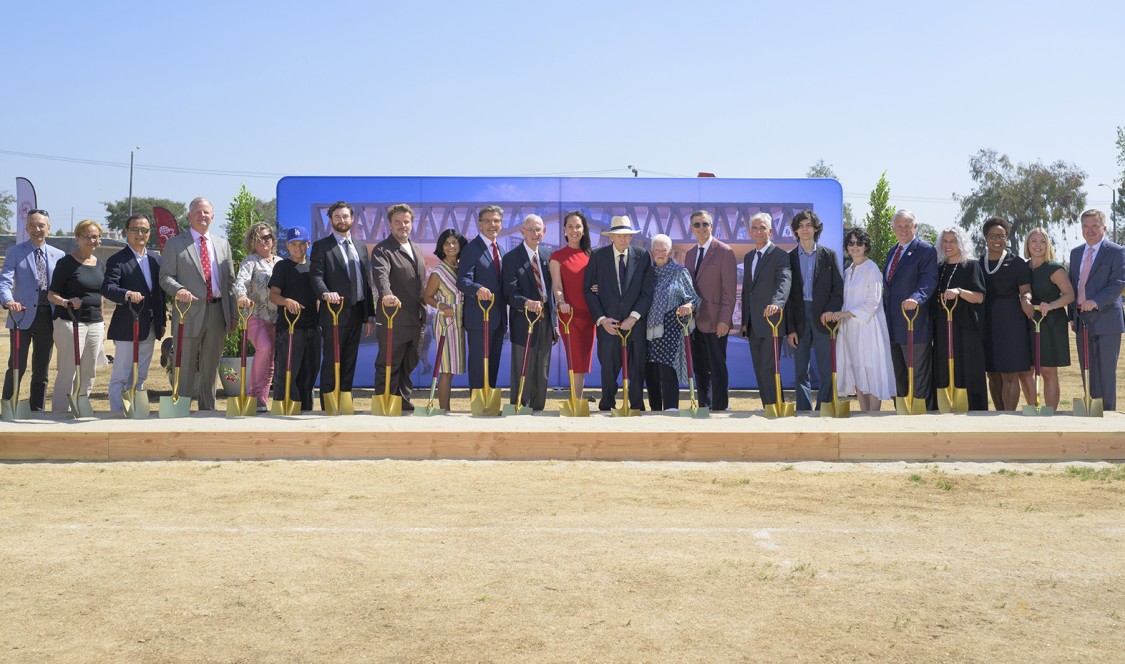Watch the Groundbreaking video
With shovels, hardhats, and a rendering of the visionary new Center as a backdrop, faculty, students, staff, trustees, and other guests assembled on Friday, Sept. 30 for a groundbreaking ceremony for the Robert Day Sciences Center (RDSC), a next-generation facility to house the College’s new Kravis Department of Integrated Sciences.
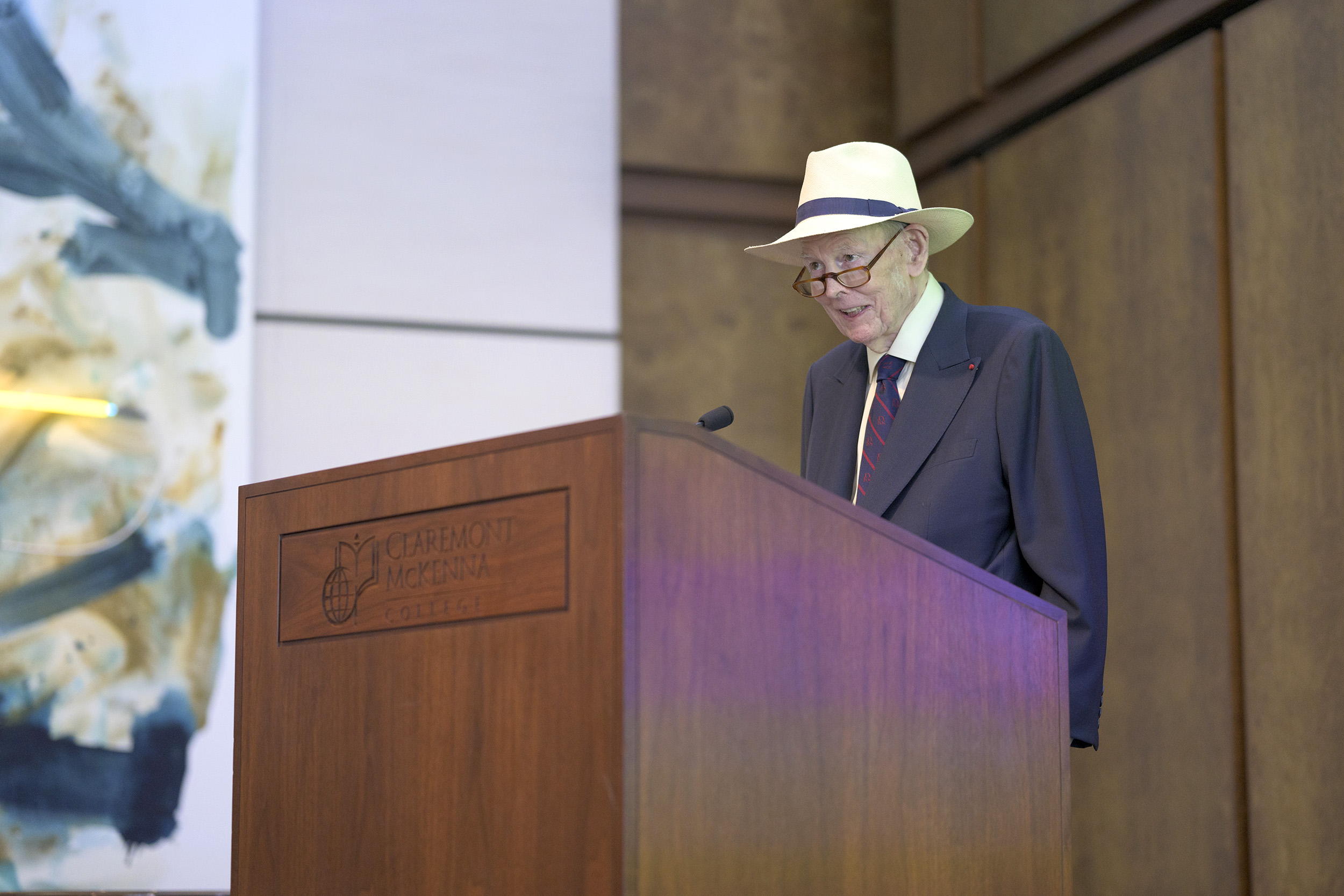
The Center honors Robert Day ’65 P’12, CMC alumnus and 52-year trustee and is made possible by lead gifts from the W.M. Keck Foundation and two foundations affiliated with the Day family.
In remarks during the ceremony, Day reflected on the importance of integrated sciences to solve current global challenges and expressed confidence in CMC’s roadmap. “This is very significant, not just as a building,” Day said, “but also as a program.”
Participants were able to tour the bulldozed and fenced-off area now prepared for transformation, with materials and construction equipment at the ready. Planned completion for the 135,000-square-foot building is targeted for fall of 2024.
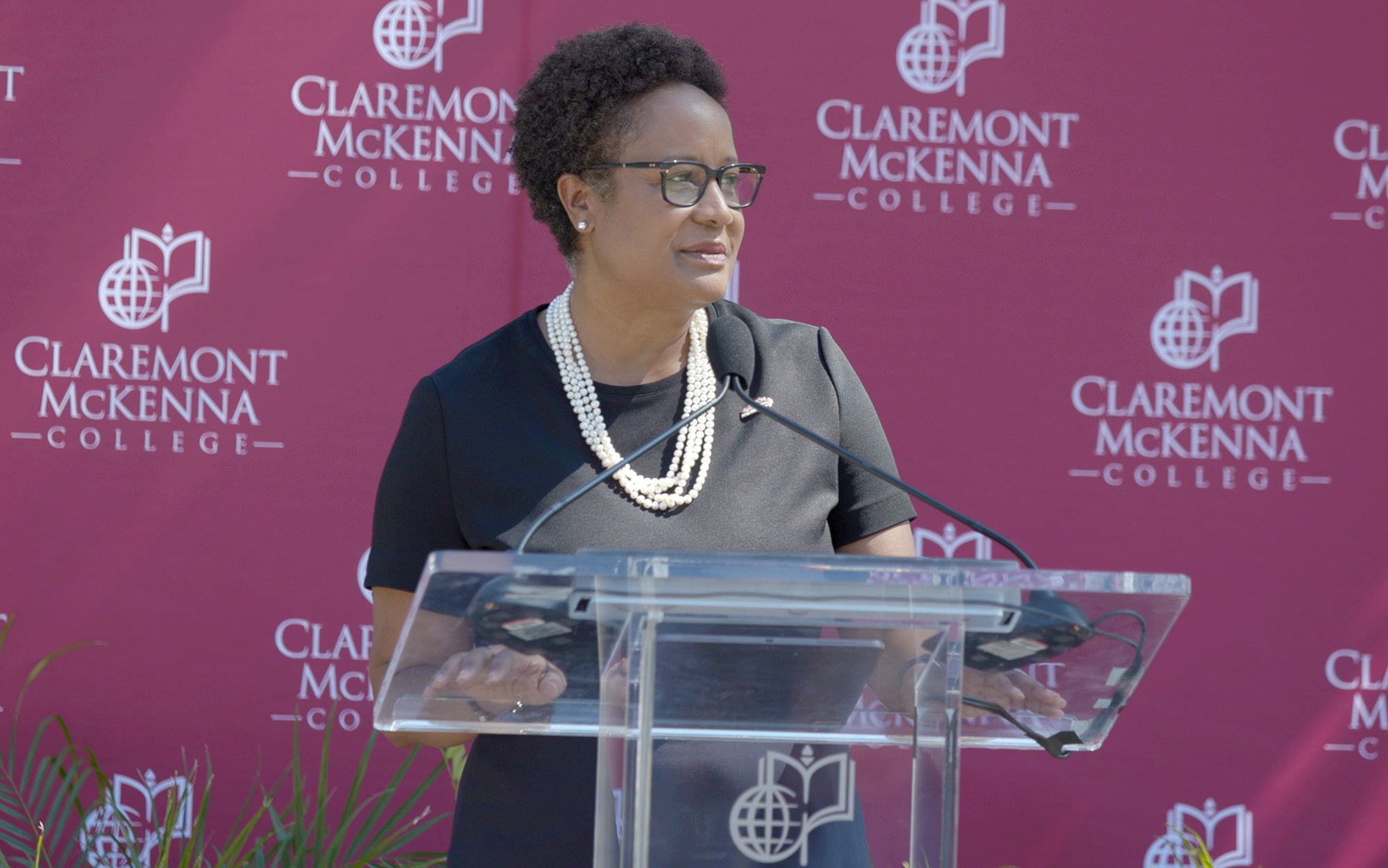
Harriet B. Nembhard ’91, dean of the College of Engineering at the University of Iowa and member of CMC’s Integrated Sciences Advisory Council, called the celebration a “bricks-and-mortar milestone for the College that is the result of a collaborative planning effort, that has spanned many years.”
Positioned at the eastern edge of campus with views of Mt. Baldy, the Center’s striking design is a metaphor for the way the College is reorienting science education. Its structure is designed as a stack of two volumes, or rectangle “blocks”—two per floor—with each pair rotated 45 degrees from the floor below. A skylit central atrium stands at the heart of the building, providing direct views into classrooms and research spaces from all levels. Eight outdoor terraces will offer sweeping views of the mountains in the North.
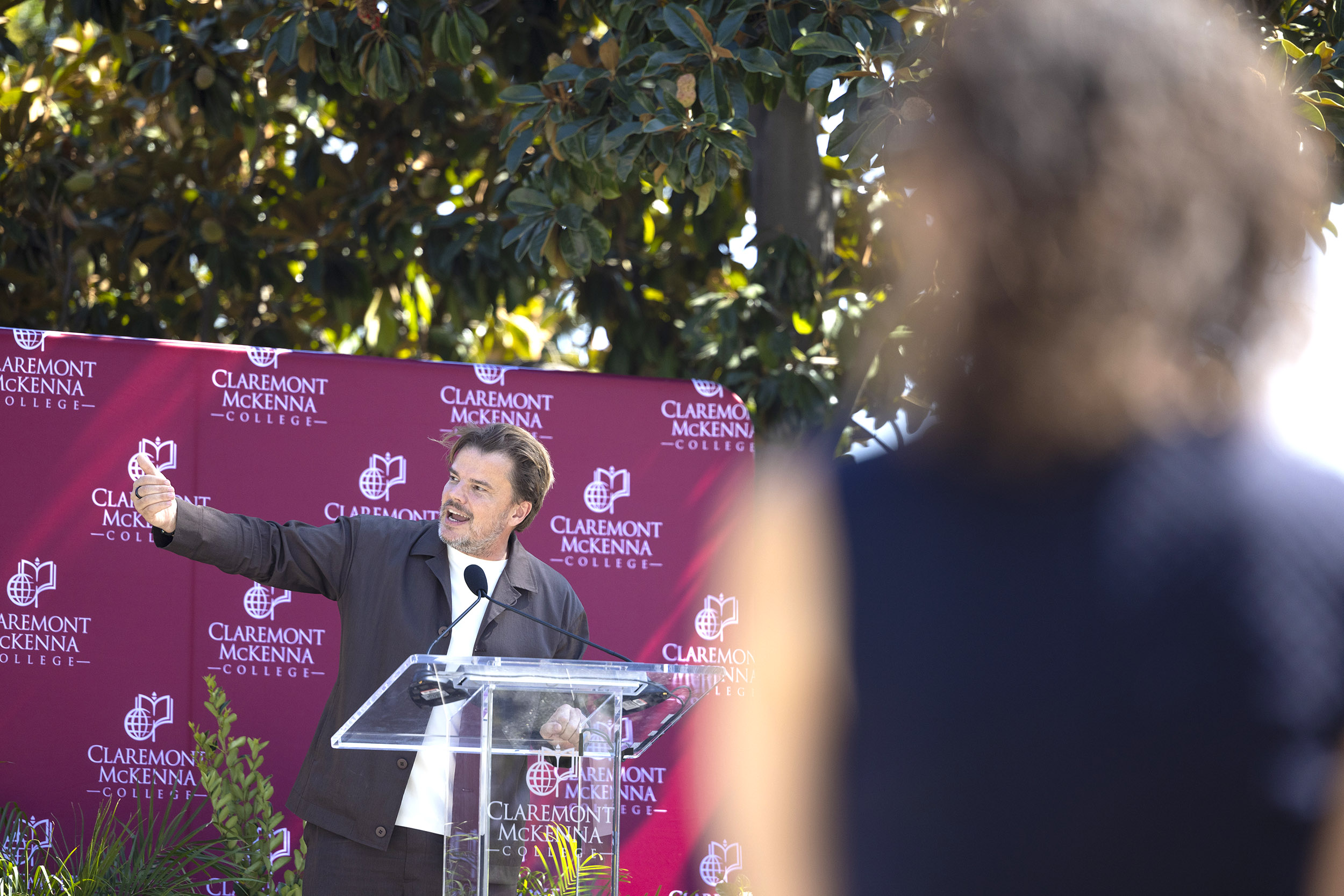
“Each level of the building is oriented towards a different direction of the campus, channeling the flow of people and ideas internally between the labs and the classrooms as well as externally between the integrated sciences and the rest of the campus,” said Bjarke Ingels, lead architect of the RDSC and founder and creative director of BIG-Bjarke Ingels Group. “It is our hope that the building will not only provoke new conversations between scientists but that it may also stimulate the rest of the liberal arts students to take a deeper interest in the sciences and vice versa. The analytical embracing the experimental—rationality intersecting with creativity,” he continued.
Ingels called the groundbreaking a “pivotal moment in the life a project” where ideas and dreams from many contributors “are being translated from data to matter, from fantasy into reality.”
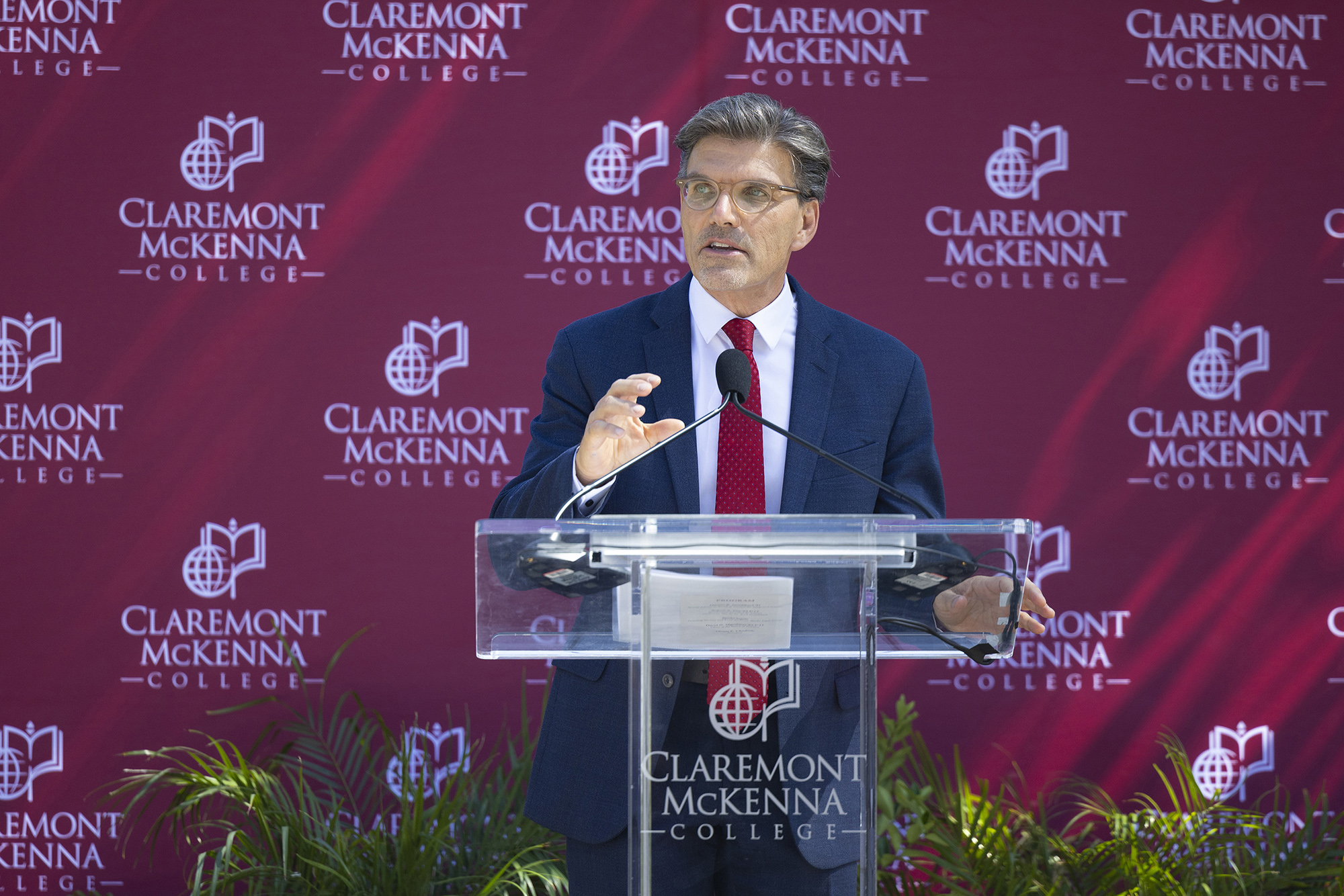
President Hiram E. Chodosh echoed Ingels’ enthusiasm, calling it a “groundbreaking groundbreaking.”
“I’m just incredibly proud and moved by all your individual contributions that bring us to this moment. The vision and promise of the building is a home to what will be one of the most powerful undergraduate liberal arts science programs ever imagined.”
CMC’s new Kravis Department of Integrated Sciences is organized around three socio-scientific grand challenges, specifically: Health (Genomics, Systems Biology, and Health); Brain (Brain, Learning, and Decision); and Planet (Climate, Energy, and the Environment). The new department honors philanthropist, trustee, and alumnus Henry Kravis ’67 and his wife, Marie-Josée, whose naming, lead gift supports CMC’s vision for integrated sciences and provides for the appointment of 25 world-class liberal arts faculty, including 12 Kravis Chairs in Integrated Sciences.
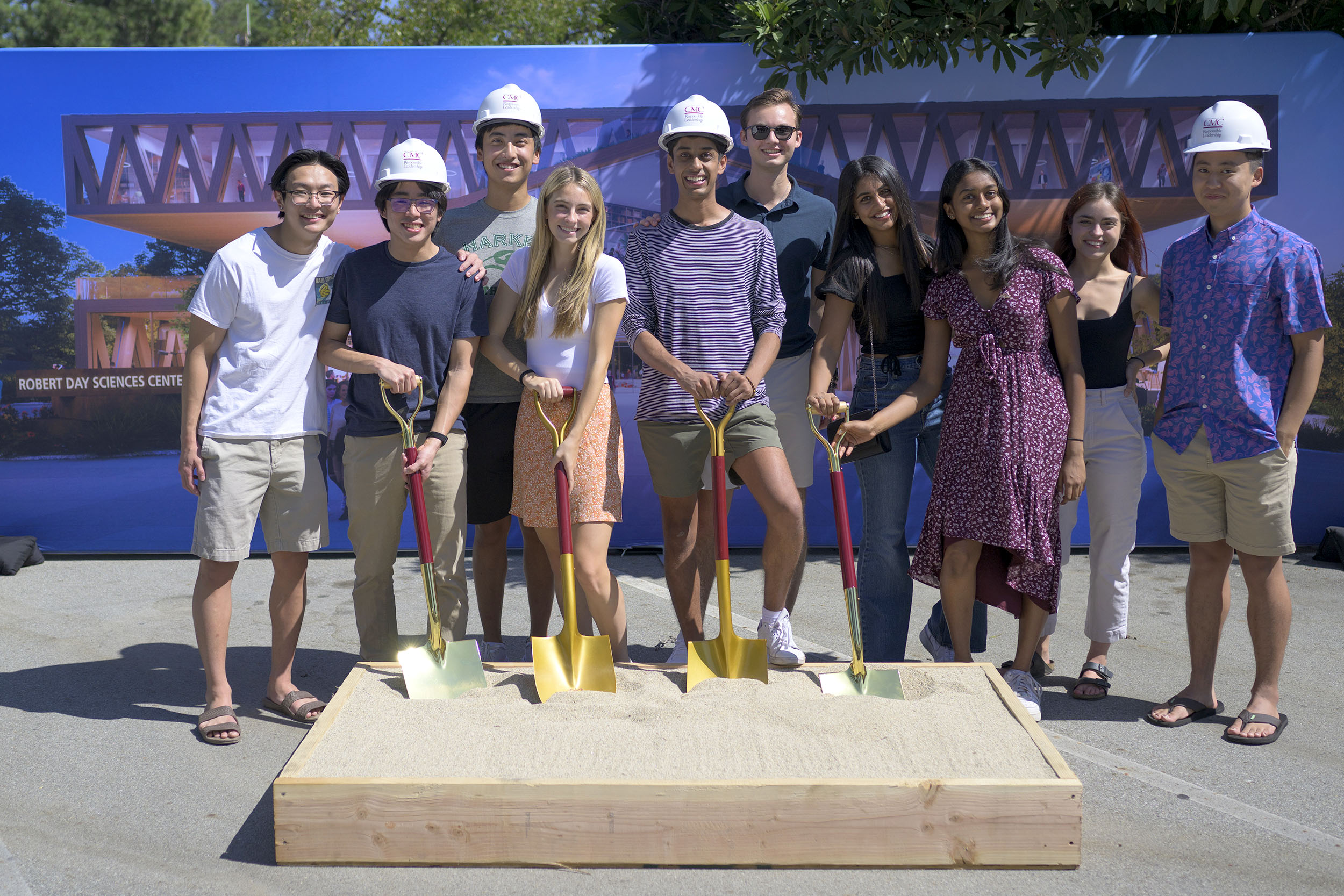
Ran Libeskind-Hadas, Kravis Department of Integrated Sciences Founding Chair, described the new Center as “magical.” “This is a physical embodiment of our department coming to fruition,” he said, but also noted that the building is important for the campus as a whole. “It will be an opportunity to bring the entire community together to have conversations and engage science with the humanities and social sciences. I’m thrilled!”
Both Chodosh and Ingels observed that the groundbreaking also opens the way for the future expansion of the Roberts Campus, 75 acres east of Claremont Boulevard and the realization of further academic, athletic, social, and residential opportunities reflected in the campus master plan. BIG-Bjarke-Ingels Group is also designing the Roberts Campus, which will integrate fully with the RDSC.

